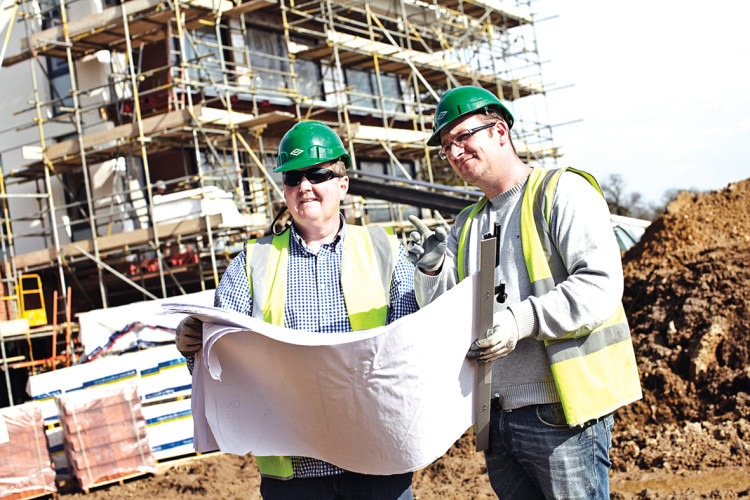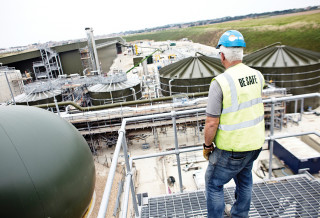Raising standards of on-site health and safety inevitably means getting properly organised. Method statements have to be prepared; risk assessments completed – and that’s just at site level. There’s often an awful lot more paperwork to wade through before you even get awarded the contract. Clients today routinely require their contractors to complete detailed health and safety assessments and unfortunately each client seems to have its own preferred assessment method – and there are many to choose from.
Completing the various assessments required to work with different clients can therefore impose a considerable burden on the contractor – especially on smaller contractors which don’t have the administrative resources to devote to this time-consuming task. “Health and safety legislation in construction can be a minefield for SME owners and managers, who need to demonstrate their competency while also ensuring they adhere to industry guidelines,” comments Philip Prince, director with Constructionline, the public-private online register for pre-qualified contractors and consultants.
“Complicating the procurement process is that many clients have historically insisted on belonging to different health and safety assessment schemes, or even conducting their own assessments. Having always done so, they are unaware of the negative impact these practices are having on their supply chain,” he adds.
Because there are so many health and safety assessment providers out there, the problem for contractors is deciding which one (if any) they should join, knowing that they may be excluded from certain tenders by not belonging to a client’s preferred scheme. “Having to apply for multiple schemes means duplication in effort, as well as time and money wasted which could be better spent elsewhere, such as looking for work,” explains Prince. And he points out that as construction struggles to shake off its recessionary hangover, the need to streamline business processes, particularly for SMEs, is especially pressing.
There is, however, a scheme that can help contractors simplify this pre-qualification process and widen the scope of opportunities for smaller firms. “With the revision of its Construction Design and Management Regulations (CDM 2007) in 2007, the Health & Safety Executive (HSE) brought together existing health and safety objectives into a single regulatory package,” explains Prince. “That started a process that would eventually revolutionise health and safety pre-qualification.”
The HSE entered into discussions with key stakeholders including Constructionline, CHAS (the Contractors’ Health & Safety Assessment Scheme, run by the government) and the National House Building Council, to discuss how they could all work together to further simplify pre-qualification, reduce duplication and improve standards of health and safety in the industry. The outcome of this process is the Safety Schemes in Procurement (SSIP) Forum. SSIP Forum is an umbrella organisation of 39 members, each offering accreditation and each committed to facilitating cross-recognition between health and safety pre-qualification schemes on the basis of the core criteria from the CDM approved Codeof Practice.
Any contractor that is registered with an SSIP member should no longer have to join any other scheme in order to pre-qualify during a tender process – a huge benefit for time-short and cash-squeezed SMEs. “Freeing up time in the pre-qualification process allows SMEs to concentrate on the more detailed and project specific phases of procurement process that demonstrate they have the experience to successfully take on the task at hand,” says Prince.
He says that a survey of Constructionline’s database of registered contractors and material suppliers – of which 65% are SMEs – found that before adopting the principles of SSIP, a typical health and safety pre-qualification form would take on average eight hours to complete. “At an average hourly rate of £35, this represents a cost of £280 in lost resource,” says Prince, adding that this number could easily escalate to thousands when completing multiple questionnaires for different clients. Since the launch of the scheme in 2009, over 12,800 suppliers have been exempted from completing Constructionline’s health and safety questionnaire through accreditation with an SSIP member scheme. Prince claims that this amounts to savings of nearly £3.6m in time and resources.
“Of course, SSIP will only realise its massive potential if it is adopted wholesale by the industry” he says; “and given that the stakes are so high, it’s understandable that some of the majors will want to keep a tight rein over health and safety assessments.” There is – perhaps surprisingly, given the proliferation of different forms – a British Standard for construction pre-qualification questionnaires: PAS91:2013. This was relaunched in April this year with extensive revisions which, according to Prince, will help to cut down bureaucracy further and improve site safety by recognising SSIP. “It means suppliers are granted exemption from having to complete [the health and safety] section if accredited by an SSIP scheme member, and, with PAS91 expected to become the flagship standard for health and safety pre qualification questionnaires, contractors who hold an SSIP accreditation are

leading the way.”
Not surprisingly, Constructionline itself has embraced the SSIP wholeheartedly, launching its own SSIP scheme – called Acclaim – in partnership with its sister company Capita Symonds. Feedback from its own users, which highlighted a need for simpler, more transparent health and safety accreditation, led to the launch of Acclaim which Constructionline hopes will open up tender opportunities with the increasing number of clients who are requesting accreditation by an SSIP member.
“It also makes the pre-qualification process even easier, integrating with the Constructionline application and allowing suppliers to become pre-qualified and health and safety assessed all in one place,” says Prince.
One of the SSIP forum’s main aims is to broaden its engagement with the major contracting community and work with them to help overcome their concerns – a goal very much in keeping with Constructionline’s own raison d’etre, says Prince: “We see it as our role to continue to work with, advise and influence buyers on acceptable interpretation and appropriateness of health and safety standards in the UK, to ensure we’re meeting their needs in the prequalification process, as well as the interests of suppliers.
“Change won’t happen overnight but the SSIP has built up tremendous momentum in the less than four years since its inception, and with every new scheme and buying organisation that comes into our initiative, more contractors will be saved time, effortand money.”
Contractors registered with an SSIP member shouldn't need to join any other scheme to pre-qualify.
About Constructionline
Constructionline is a public-private partnership between the Department of Business, Innovation & Skills and Capita Business Services. As a national online database, it claims to be the UK’s largest pre-qualification certification scheme for contractors and consultants. Its aim is to improve efficiencies for buyers and suppliers in the construction industry, specifically by reducing the duplication of work and administration relating to the process of pre-qualifying suppliers for construction contracts.
Constructionline is open to public and private sector organisations and owned by the Department of Business, Innovation & Skills. The Local Government Task Force recommends using Constructionline as part of the pre-qualification and tendering process.
Got a story? Email news@theconstructionindex.co.uk




